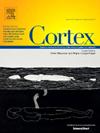Lateral peri-hand bias affects the horizontal but not the vertical distribution of attention
IF 3.2
2区 心理学
Q1 BEHAVIORAL SCIENCES
引用次数: 0
Abstract
It has been demonstrated that humans exhibit an attention bias towards the lower visual field (e.g., faster target detection for targets appearing below eye level). This bias has been interpreted as reflecting the visual motor demand in near space below eye level. In this study, we examined whether this spatial bias could be affected by participants' hand position at the time of testing. Specifically, if the hand position is held at eye level at the time of target detection, whether the bias toward the lower visual field would be reduced if the bias is directly related to the motor demand at the time of testing. Using a modified spatial cueing paradigm, in Experiment 1, we found a downward bias in reaction time measures and cueing effects in a target detection task. In Experiment 2, using the same stimulus used in Experiment 1, we compared attention performance when participants’ dominant (right) hand was positioned close to the right side of the visual display with the conditions where their hand was in their laps. We revealed that despite an influence on the horizontal distribution of attention (lateral peri-hand effect), the downward bias in attention remained regardless of the hand position. This revealed that lateral peri-hand manipulation is insufficient to override the attention advantage for stimuli appearing in the lower visual field.
横向手周偏误影响注意力的水平分布,但不影响垂直分布。
已经证明,人类表现出对低视野的注意偏差(例如,对出现在眼睛水平以下的目标的更快的目标检测)。这种偏差被解释为反映了视觉运动需求在近距离低于眼睛水平。在这项研究中,我们考察了这种空间偏差是否会受到测试时参与者手的位置的影响。具体来说,如果目标检测时手的位置保持在眼平线上,那么如果这种偏向与测试时的运动需求直接相关,是否会减少对下视野的偏向。实验1采用改进的空间线索范式,发现在目标检测任务的反应时间测量和线索效应中存在向下偏差。在实验2中,使用与实验1相同的刺激,我们比较了参与者的左手(右手)靠近视觉显示的右侧和手放在膝盖上的情况下的注意力表现。我们发现,尽管注意力的水平分布受到影响(横向手周围效应),但无论手的位置如何,注意力的向下倾向仍然存在。这表明,侧手周围操作不足以覆盖对出现在下视野的刺激的注意优势。
本文章由计算机程序翻译,如有差异,请以英文原文为准。
求助全文
约1分钟内获得全文
求助全文
来源期刊

Cortex
医学-行为科学
CiteScore
7.00
自引率
5.60%
发文量
250
审稿时长
74 days
期刊介绍:
CORTEX is an international journal devoted to the study of cognition and of the relationship between the nervous system and mental processes, particularly as these are reflected in the behaviour of patients with acquired brain lesions, normal volunteers, children with typical and atypical development, and in the activation of brain regions and systems as recorded by functional neuroimaging techniques. It was founded in 1964 by Ennio De Renzi.
 求助内容:
求助内容: 应助结果提醒方式:
应助结果提醒方式:


